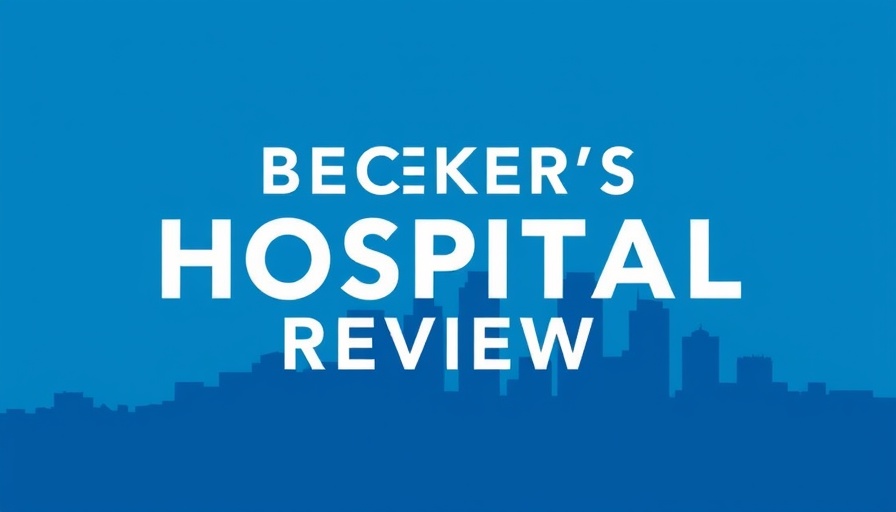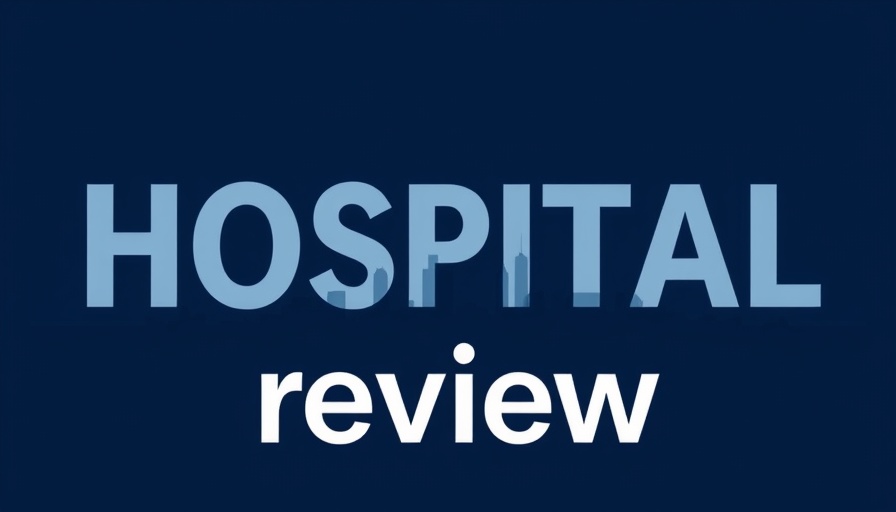
Patient Volume Trends: What to Expect in the Next Decade
The healthcare landscape is shifting dramatically, bringing exciting changes and opportunities for healthcare providers, particularly in outpatient services. According to a recent report by Sg2, the next ten years will see significant growth in patient volumes across various sectors. The rising demand not only points toward a booming market but also emphasizes the need for healthcare systems to adapt.
Shifting Focus Towards Outpatient Care
Over the next decade, outpatient care is projected to see an incredible increase of 18%, with outpatient surgery soaring by 20%. This trend indicates a preference for less invasive procedures and more efficient care delivery models. As independent physicians and nurse practitioners, you must consider how to leverage these changes to optimize practice revenue and incorporate patient engagement tools that enhance the experience in outpatient settings.
The Impact of Telehealth on Evaluation and Management
Anticipated growth of 16% in evaluation and management (E&M) visits can largely be attributed to the rise in telehealth. Virtual visits, which are expected to make up 19% of all E&M visits by 2035, represent a tremendous shift towards facilitating care that is more convenient for patients. Incorporating telehealth and remote therapeutic monitoring into your practice can dramatically improve patient outcomes and satisfaction, and even help in navigating complexities around Medicare reimbursement.
Inpatient Care: A More Modest Growth
Though the growth rate for inpatient care is projected at a modest 5%, there is a pivotal aspect to consider: patient acuity is expected to increase. This means that while the number of patients may grow slowly, the complexity of care—and the associated costs—will require careful planning and optimization of healthcare services. For independent healthcare providers, developing strategies focused on improved operational efficiency will be essential.
Post-Acute Care and Its Explosive Growth
More exciting trends are emerging in post-acute care: volumes are expected to grow by an astonishing 31%, particularly in home health services, which will grow 24%. The aging population, as well as preferences for aging in place, drive this trend. As practitioners, you need to invest in senior care solutions and programs that foster aging at home by utilizing healthcare automation strategies that make care delivery more efficient.
Opportunity in Pediatric and Diabetes Care
While pediatric inpatient discharges may decline by 1%, outpatient pediatric services are expected to grow by 8%. This highlights an opportunity for family practice doctors to revitalize their offerings to pediatric populations. It also suggests the necessity for comprehensive diabetes management programs as discharges for type 2 diabetes patients are showing a slowdown, influenced by GLP-1 medication usage.
Home and Hospice Care: A Significant Demand Increase
Services related to home hospice care are anticipated to surge, with home and domiciliary E&M visits expected to grow by 33%. This growth offers independent pharmacies unique opportunities to integrate their services with hospice and palliative care, which could enhance pharmacy profitability and improve patient outcomes.
Innovations in Emergency Department Services
The increasing use of emergency services can be attributed to rising emergency department volumes, expected to grow by 5% by 2035. However, urgent care visits are predicted to stabilize. As healthcare providers, focusing on improving the speed and efficiency of emergency services will become essential, allowing for better overall healthcare delivery.
Final Thoughts: Preparing for Future Trends
As independent healthcare providers, now is the time to reevaluate existing practices and prepare for these shifts in patient volume. Exploring medical staff retention strategies, enhancing practice automation, and refining healthcare HR strategies will be crucial to adapting to these changes. Embracing the trends of telehealth, outpatient care, and home health services will position your practice for sustained growth. The healthcare environment is transforming, and being proactive is key to not just surviving, but thriving, in the years to come.
To make the most of the upcoming patient volume trends, consider integrating innovative patient engagement tools and technological advancements into your practice. By staying ahead of the curve, you can enhance patient care while maximizing your operational efficiency.
 Add Row
Add Row  Add
Add 




Write A Comment